ScreenFonts: The Adjustment Bureau, Source Code, Trust, Madea's Big Happy Family, Fast Five
Whoa, did you hear that? That was the sound of January and February whizzing by through a rip in the fabric of reality and dissolving in time. Suddenly – exactly one week after the last one! – we're at a new instalment of ScreenFonts, my examination of typography on movie posters. This one covers films released in March and April. I mentioned in a past episode that I was thinking of changing my schedule, and because I needed to reboot this series anyway this seemed like the perfect moment to implement these changes. From now on I will not review the posters from the previous month, but look at the current posters in the second week of the month. As movies have a shorter shelf life than music albums it makes more sense to discuss the ones currently playing in theatres. Besides the covers on DVDs often look quite different from the original posters. I just hope that so much pop culture two weeks in a row won't make your collective heads explode…
The problem with the movie poster for The Adjustment Bureau is that it's neither realistic nor artificial enough. The design seems to be inspired by golden age comics à la The Spirit, pulp literature book covers, and early 20th century experimental cinema. All the elements are in place – threatening shadows projected on the cityscape, typography integrated in the architecture, some flashes of red in a black-and-white picture, and a couple fleeing, frozen in a somewhat unnatural pose. Yet those elements don't really gel, and the end result looks like a hasty contemporary recreation of a far superior vintage original.
What annoys me most is the use of Helvetica, either Inserat or Compressed – I can't even be bothered to look it up. There are more than enough compact sans serifs that are historically accurate and project the right tone, so why settle for this default crap? For example Hanseatic, an old narrow Grotesque from Stempel's early days revived and revised for photocomposition, and digitised as Swiss 924 by Bitstream, does exactly the same thing but better. And the unconventional shapes of select characters like the A, M, N, and so on would make Aurora a far better match for the surrounding architecture. I do however appreciate the extra effort of customising the "J" for improved letter fit. It's a detail, but it shows an attention to typography that is trumped by the uninspired choice of typeface.
You know this feeling, when you drive a certain car model you suddenly start to notice all these other people driving that same model? Well, after discussing the images overlaid with type on the Morning Glory and Tiny Furniture collaterals last week I found more examples amongst the March movie releases. The first ones are the teaser posters for The Adjustment Bureau. Although generally speaking they look classy and the type is perfectly readable, they are far too similar to that one poster for Michael Clayton. The almost identical tagline really doesn't help. And I am not a fan at all of the forced justification – sometimes referred to as "rubber band spacing" – applied to the Alternate Gothic caps to have them create a perfect rectangle.
A similar approach can be found on the movie poster for Akmareul boattda (I Saw the Devil), and this time it produces a terrific image. There's something undeniably threatening and visceral about the two dark portraits behind the movie title rendered in brutal rough brush strokes. The contrasting sickly turquoise and blood red on the two protagonists' faces, combined with the ultra sharp rendition of their skin bringing out every single pore and hair, is absolutely smashing.
More overlaid type on an alternate poster for the same movie. Here ethereal white italic caps in Gotham are alternated with small yellow credits set in Goudy Oldstyle. The photograph itself looks deceptively spontaneous, but don't be fooled – it is a very clever set-up for the expertly positioned type. Although the letters are either very thin or very small, they remain perfectly legible. Furthermore, despite their lack of "body" they manage to create the illusion that they effectively obfuscate the identity of the person hiding behind them. And the overall shape created by the typographic composition inexorably draws the eye to the hammer the killer is holding in one hand. Once you notice the blood spatters in the snow the horrible image is complete.
There is only one thing I am unsure of, and it is an often recurring dilemma in centred typography. The fact that the big Gotham caps are italic yet centred on a perfectly vertical axis creates an uneasy tension. It could be this tension has a purpose, adding to the uneasiness one is supposed to experience when viewing this design. Still I am wondering how this design would have looked if the movie title had been centred on an axis with a slant matching the slope of the italic caps.
And again a very similar typographic treatment, on an image as lovely as the previous one was gruesome, is featured on the movie poster for Jane Eyre. Instead of using a predictable antique handwriting script, the design was approached from a modernist angle. The subdued colour palette is gorgeous, and the face incorporated in the dress inventive and beautiful. If I had to chose between the inescapable Helvetica used here and Gotham which has become equally inescapable these past few years, I'd go for the latter. But let's not forget there are many other beautiful extra light fonts. I just wish more designers would look beyond the obvious choices so we can have a little more diversity. That's the exact purpose the FontLists I collaborate on were created for.
What a rare treat – after all this time a new movie poster by Chris Ware. Regular readers know I kind of worship this comic book artist – for his beautiful and incredibly detailed art, for the way he dissects the human condition with surgical precision in his hilariously depressive stories, and in no small part for his exquisite hand lettering. The last movie poster of his I encountered was a wonderful alternate design for The Savages in the February 2008 episode of ScreenFonts.
This time the inimitable Mr. Ware created a variant poster for the Thai movie Loong Boonmee raleuk chat (Uncle Boonmee Who Can Recall His Past Lives). The hypnotising design has a surprising colour palette, with bright magenta, grass green and pure yellow nicely complementing the greyish blues and black. As is customary in Chris Ware's work the artwork is full of nifty details, from the twin suns doubling as smouldering eyes to the symmetrically positioned fishes composing a dreamy face in the upside down silhouette. Other signature elements are the four circular vignettes depicting story fragments, the intricate ornamental line-work, and the painstakingly hand-rendered lettering.
Although I am generally wary of faux Asian typography, the characters in the movie title strike a nice balance between the Latin alphabet and the Thai script. Equally well executed are the Art Deco inspired square display sans and the genuine Thai at the bottom. Of course Chris Ware couldn't simply slap the standard laurels for the Cannes Palme d'Or on the poster, but re-interpreted their design and mirrored them to seamlessly integrate those extra elements in the poster design.
Sometimes simple and straightforward works fine. The movie poster for Cracks opts for an obvious design solution, fragmenting Eva Green's portrait over the whole surface of the poster. Rationalising the cracks with an underlying geometry makes the image look like a reflection in a precious stone rather than a cracked mirror. However I must say I prefer this solution which yields a more stylised image. In this case not having a photo-realistic rendition produces a stronger, more memorable poster. The vintage-looking serif caps are Central Station, a typeface reminiscent of architectural lettering and stone-carving.
In the movie poster for Source Code a miniature Jake Gyllenhaal runs through a field of iPads ready to be harvested. He reaches such an impressive speed that the slipstream he creates in his wake makes them blow up in the air. As is to be expected for this type of movie a square sans serif was used, in this case the classic Agency… oh bother, please try a little harder? This sucks so bad it makes me want to bang my head against the wall.
Although image-wise this doesn't exactly break the mold when it comes to horror thrillers, on a typographic level the movie poster for Insidious at least tries something else. Instead of relying on the obligatory Trajan or distressed face, the tech sans with rounded corners Neutraliser by techno and clubbing specialists Identikal is laid out in an unusual text composition. Movie title, credentials, and tagline are combined into a labyrinthine typographic cluster with text in many different sizes, and the movie title even running vertically. The red "IS" seems to indicate there are multiple readings intended, especially since both "insidious" and "is" are also repeated in the left and right eye of the boy respectively. I have no clue what it means.
Now this I like a lot. As I reported last year I was quite happy with how Ignition Print cleverly suggested extreme violence in their poster for Kick-Ass. Super, a movie dealing with the same theme of self-made superheroes in the real world, approaches the subject of the movie from an entirely different angle on its poster. Instead of focussing on the violence, it capitalises on the amateurish nature of the self-made heroes with an inventive and fresh solution. Holes for eyes and mouth were cut out of plain red and green posters, creases and all, for respectively Crimson Bolt and Boltie who are peeking through them. The posters poke fun at the superhero convention of having a secret identity. In tune with the general concept the type was hand-drawn in scratchy handwriting.
Judging from the comments on the IMPAwards website I am not the only one who immediately thought of last summer – when seeing the movie poster for Cat Run. The teaser poster of the former has white silhouettes running against colourful paint splatters, while in the latter the silhouette of a running woman is filled with a vibrant collage of photo fragments. Both the black background and the big heavy sans caps in red and white – Standard Extended for Knight And Day and Gotham for Cat Run – are very similar. Although the artwork clearly is a contemporary re-imagination of 70s and early 80s movie posters and not a literal interpretation, I still think the iTunes aesthetic of diffused reflection of the running woman's feet feels like an anachronism.
Typographically speaking there is one flagrant mistake: the red border around the poster should have been interrupted in order to preserve the integrity of the counter of the big red "C". If you are unsure what I mean, please check my mini-tutorial as a reaction to the poster for September 2010 episode of ScreenFonts.
One of the best posters this episode comes from a movie which happens to have one of the most bizarre premises ever. Rubber tells the story of Robert, an inanimate tire, which one day becomes sentient and discovers it has destructive telepathic powers. It soon sets its sights on a desert town; in particular, a mysterious woman becomes his obsession. Yes, for real. The poster refers to 50s and 60s grindhouse movies and looks absolutely fabulous. The bold design in red and black on off-white is striking. Deftly transforming the inside shape of the tire into a menacing eye injects the design a healthy dose of humour. Add to this a whimsical tagline riffing off a silly play of words and a hand-cut, smudgy interpretation of ITC Machine – making it look a bit like FF Rekord – and you've got yourself a winner on your hands.
Connecting the movie to pulp fiction covers, the alternate poster was illustrated by art couple Julie Bell & Boris Vallejo. The Peruvian-born American painter – immigrated to the United States in 1964 – frequently works with Julie Bell, a painter and model, and his wife since 1994. The choice of Vallejo is logical – he earned widespread recognition in the mid-60s with his illustrations of Tarzan, Conan The Barbarian, Doc Savage and various other fantasy characters, often done for paperback fiction works featuring those characters. His hyper-representational paintings also are featured in a series of best-selling glossy calendars. Vallejo's art typically features gods, monsters, and well-muscled male and female barbarians engaged in battle. Some of his male figures were modelled by Vallejo himself, and many of his later female characters were modelled by his wife. His latest works still retain heavy fantasy elements, but lean more towards the erotic rather than pure fantasy themes.
Julie Bell & Boris Vallejo were commissioned to paint this poster for the French horror comedy film. They state they "very much enjoyed the crazy surrealistic sense of humor in the movie and (…) enjoyed being asked to bring that feeling across in this poster." Perfectly in tune with the artwork the movie title is set in late-80s display face Revue.
This could have gone so wrong, and thankfully the movie poster for Trust turned out so right. Instead of having the usual full-colour overblown anxiety fest typical for Hollywood productions, a stylised scene beautifully visualises the film's theme. The outstretched hand emerging from the laptop monitor, offering a bouquet of roses – a bright red splash of colour in the high-contrast black and white image – ingeniously suggests the online sexual predator luring the girl into his trap.
:: U P D A T E ::
In the comments Georg »Schui« Baumann correctly pointed out the resemblance with Banksy's stencil art, something I didn't pick up on. The bouquet could even be seen as a reference to his Love is a Riot Flower Thrower. Well spotted, Shui.
Anuthin Wongsunkakon's tech-looking typewriter-ish sans Carbon, released through T-26, is a perfect match for this detached, cool artwork. Normally I am not so hot for these strictly geometric designs, but Anuthin has a knack for making them work, just like his splendid Reform for Psy/Ops.
A little closer to traditional Hollywood fare is the movie poster for action thriller Hanna. The separate elements are quite predictable – close-up of the tense face of the main protagonist, cross-hairs integrated in the movie title and an ominous tagline. Rotating the entire typographic composition in FF DIN to match the angle of the picture adds a touch of dynamism, and the slightly off colour scheme reminiscent of colourised black-and-white pictures keeps this design on the good side of the mainstream.
Quite the opposite is the movie poster for Meek's Cut-Off, which is as far removed from the mainstream as possible. It sports artwork by Marlene McCarty, an artist and designer who was part of the activist art collective Gran Fury in the late 80s and early 90s. The poster is the subject of a write-up in the Movie Poster of The Week series on Mubi Europe, which concludes with a few other Western posters of strong frontier women and their firearms.
Although I appreciate the intention of the poster, and the illustration is beautifully drawn, I don't really like how the end product looks. The ochre and brown illustration on a pale yellow background with light grey type amount to a poster with very little contrast. The typography is ill-defined too – the narrow grotesque which reminds me of Grotesque Extra Condensed, and the wood type design Birch just don't have enough personality to carry the design nor grab the attention of the viewer, certainly not in this combination. It's not that the poster is bland, it just seems rather… "pale" to me.
With Madea's Big Happy Family Tyler Perry's at it again (I won't even go into the main movie poster which is quite poor). I am a fan of spoof designs, but they have to make at least a modicum of sense. Tyler Perry's always seem gratuitous to me. Although these four alternate designs mocking Oscar-winning films are mildly funny, I don't see any real comedic connection between the movie they refer to and Tyler Perry's movie they advertise. Apart from the Godfather one – the family angle makes sense – they could be part of the promotional campaign for any of his films. In that regard this makes them redundant in my opinion. So, Mr. Perry, do you understand the words that are coming out of my mouth!? Either wise up or give up. For a non-gratuitous spoof of Oscar-nominated movies see for example The President's Speech, a sketch from ABC's Jimmy Kimmel Live!.
When it comes to nonsensical movie posters two years ago on The FontFeed to see what I mean. At least they remain true to Antique Olive Nord Italic which is effectively the signature face for the series.
In a history of bad Photoshop compositions in movie posters the main poster for Fast Five is particularly bad. This designer badly needs to brush up his/her Perspective 101. What's more, in this as well as other variant designs Dwayne Johnson appears to be part of Vin Diesel's team instead of being the antagonist chasing him. Quite incomprehensible.
So, everyone's head still intact and safely attached to your neck? Good. I'll get to work on the next My Type of Music next.

















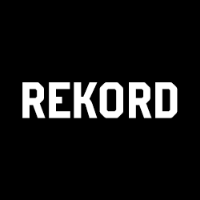




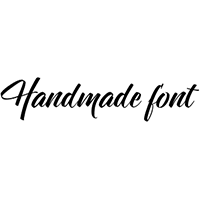


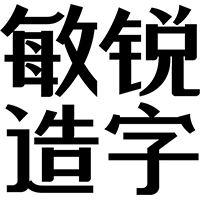
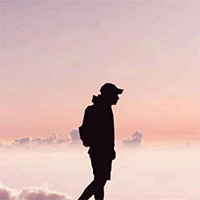

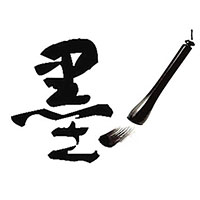





 闽公网安备35010202000240号
闽公网安备35010202000240号